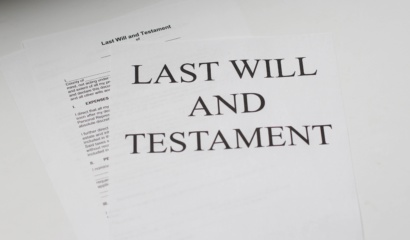Home / Business Legal Lifecycle / Insolvency/Wind Up
Insolvency/Wind Up
Advice on How To Wind Up an Insolvent Company
Phase 13 – Business Insolvency/Winding Up
The Insolvency/Winding up phase is the last phase and completes the Business Legal Lifecycle, which means that the business has come to an end. Some business owners will never get to this point as they may retire or sell their business before they get to this phase. However, more often than not, the vehicle that operates the business will need to go through this wind up process once the business is sold to ensure that all of the funds and obligations are properly dealt with from a legal and tax perspective.
For this reason, this insolvency is not necessarily negative and, properly managed, you can avoid some of the common pitfalls. If a business reaches insolvency without the opportunity to go through the preceding phases of the Business Legal Lifecycle, then something has gone terribly wrong and the previous phases were not properly completed.
By successfully navigating your way through insolvency you will come through to the other side and will be able to start a new business and go through the Business Legal Lifecycle all over again. Failing this phase can cause significant costs and problems for you in the future. Obtaining the right advice during business insolvency is critical to ensure that this does not happen.
In this phase I will discuss the consequences of insolvency, winding up and bankruptcy to give you an idea of what you could be dealing with.
Important considerations during business insolvency are:
- Do I want to prevent insolvency?
- If so, what can be done to prevent insolvency?
- What are the consequences to my business if I prevent insolvency?
- How can I deal with those issues?
- Am I comfortable with my creditors not being paid?
- Is there any way that I can deal with creditors moving forward?
Dangerous considerations during business insolvency are:
- I do not need advice—I can do this myself
- If I do not do anything, then it will all go away
- The other side have been mean to me so I am not going to pay their debts
- I will not pay them out of principle
What is Insolvency?
There are a number of different legal definitions of the term ‘insolvency’ but I think the best definition of the erm is that when a company or a person is not able to pay its debts as and when they are due and payable, then the company or the person is insolvent.
If a company or a person has lots of debts, however, but they are not due and payable at a particular point in time but at some time in the future, they are not insolvent. This means that a debt-ridden company or person may be able to continue trading and be able to raise the funds to pay their debts in due course. However, if that same company or person cannot pay all of their debts as they fall due and owing, the company or person will be insolvent. In practical terms, determining when a company is solvent and insolvent is not a precise science. There are many different tests including the cash flow test and the balance sheet test. The cash flow test is essentially what I have discussed above as it determines if a company is able to continue to pay its debts. The balance sheet test looks at a company’s balance sheet and determines its ability to collect money, and whether it will be enough to pay its creditors in full.
If you are concerned that your business may be insolvent, you should immediately obtain advice from your legal and financial advisors and, if applicable, an insolvency professional to determine whether or not your business is insolvent. Taking early action can help prevent larger problems from developing and allows you an opportunity to manage, as best you can, the insolvency process.
From the Case Files
An example of this difficulty was where a client operating a large steel post manufacturing firm came to me showing their profit on paper to be considerable but with little cash in the bank account. The business was making a great profit but they were not generating the operating cash flow that they needed to survive as they did not have any debt collection procedures in place. This meant that the client thought that everything was going well but that the business was spending more money than the cash it was getting in. The business had so many creditors that would not wait for payment that the company was deemed insolvent because it could not pay its debts. One creditor would not wait for payment and wound up the company. This meant that the business ended abruptly despite being profitable on paper. The company’s employees lost their jobs and the customers lost all of the work that they had been waiting for from the business as it simply ceased trading and the half-finished items were sold as scrap metal.
How To Wind Up An Insolvent Company
When a company is insolvent, it can be wound up, which involves a liquidator being appointed to control and finalise the company. The actual process of winding up involves all of the assets of the company being sold, and the remaining money being used to pay off the remaining debts. In the rare event that there are additional funds, the money can be distributed to shareholders. Once this process is completed, the company is then deregistered from the register of companies and no longer exists.
A company can be wound up under a variety of circumstances but the more common instances are:
- (a) where a company owes a debt and will not (or cannot) pay it, the unpaid creditors can apply to the courts to have that company wound up
- (b) in some circumstances where the directors of the company determine that it cannot pay its debts, the directors can seek to appoint a liquidator to wind up the company
- (c) in some circumstances the shareholders of the company can decide that the company does not have the funds to continue trading and pay its debts and seek to appoint a liquidator to wind up the company.
A liquidator is an independent third party, often with an accounting background, who manages the affairs of the company to wind the company up. Before the winding up process commences, the company can also have administrators appointed (by its directors) to analyse the company’s financial position and attempt to restructure the company or trade it out of difficulty.
Receivers and managers are often appointed by a creditor who has security over an asset (such as a motor vehicle) to sell that asset and settle their debt but not over the balance of the company or the other assets.
Strict rules apply in the event of the winding up of a company. Once a liquidator is appointed, the directors of the company lose their control over the company and the liquidator assumes the responsibility and control over the company’s operational matters.
Often, the debts of the company are compromised and the directors can be banned from managing companies for a number of years (depending on the severity of their actions).
This section is only a very brief overview of the winding up process and the effect that such a decision has on a company. Where you are subject to such a decision you should obtain advice from your lawyer, accountant and other advisors to ensure that the debts are fairly dealt with and the process is managed properly.
Bankruptcy and Insolvency Advice
When an individual is insolvent, they can be declared bankrupt. There are two ways this can happen:
- a person can declare themselves bankrupt or
- a person’s creditors can apply to court to have the person declared bankrupt
When a person is bankrupted they have a sequestration order made against their estate. This sequestration order has the effect of taking all of the assets of the person, which are then sold and used to pay the debts of the individual.
Most of the debts that the person owes are compromised (although there are some exceptions to that rule, such as in Australia where government fines are not compromised) and the person will be bankrupted for a mandatory period of time (in Australia that time is three years).
If a person becomes bankrupt, what debts form part of their bankrupt estate?
When a person is declared bankrupt, they are obliged to complete a ‘Statement of Affairs’. The majority of debts are proved as valid (provable debts) in bankruptcy; however, a number of government-imposed expenses are not provable such as:
- (i) Penalties and fines imposed by a court such as a fine for a breach of legislation such as a breach of the laws relating to not sending out SPAM text messages
- (ii) debts that a person incurs after the date of bankruptcy
- (iii) spousal maintenance
- (iv) child support
- (v) debts incurred by fraud
When a bankrupt is discharged from bankruptcy, they will be released from provable debts; however, the debts listed above will still be owed by bankrupt. Any debts of secured creditors (this means that the creditor has a right to recover a person’s physical asset such as a mortgage of a person’s home) are not affected by a person’s bankruptcy. The secured creditor can enforce their rights against the property, sell the property and then become an unsecured creditor of the bankrupt estate for any shortfall.
Unsecured creditors generally do not have the right to repossess goods to sell them, but may receive a partial payment based on the debts that the bankrupt person owes. Any debts that a bankrupt person incurs after they are declared bankrupt are debts that the bankrupt person is personally responsible to repay and do not form part of the estate.
What assets can a bankrupt person keep?
A bankrupt person will generally be entitled to retain their personal belongings but not assets. An asset is anything that can be owned that is not a personal belonging and includes real property, chattels or possessions. Generally, a bankrupt person’s household items, furniture and personal effects, life insurance and superannuation policies are not assets that form part of the bankrupt estate. A bankrupt person may also be able to keep tools that they use to earn an income, as well as vehicles (including cars or motorbikes) so long as certain criteria are met.
A person’s residence forms part of their bankrupt estate and is not protected property. If the house is mortgaged there are a variety of options that can be used to protect the house but usually the mortgagee of the property will sell it to settle the mortgage owed by the bankrupt person.
Does bankruptcy affect a person’s employment?
Generally, bankruptcy does not prevent a person from working but a number of industries may be affected by a person being declared bankrupt. If the bankrupt person is engaged in particular trades or professions, there may be certain restrictions imposed by their professional organisation or government legislation and rules. For example, if you become bankrupt often it is difficult for you to become a solicitor, bank manager or financial advisor. You also need to be aware that a bankrupt is allowed to earn a certain amount of money before they must give a percentage of their earnings to their bankruptcy trustee.
This is a brief overview of the bankruptcy process and is designed to be read as a starting point. When dealing with these issues, you should seek the advice of your lawyer, accountant, financial consultants and any business mentors to ensure that you can properly navigate your way through this process in a controlled and proper way.
De-registration
Where your business was operated through a company when it ceases to trade, you can also elect to deregister the company. Deregistration means that the company is removed from the register of companies and ceases to exist as a separate legal entity. This is the effect of a liquidation of a company but you can also choose to do this voluntarily when the business reaches certain criteria.
Deregistration is not a simple process and you need to ensure that you have the advice of your accountants, lawyers and financial advisors to ensure that it is done correctly and that no loose ends remain.
Summary of Business Insolvency Advice
Understanding the rules and regulations around insolvency issues is important but they are complicated. No two are ever the same, and the advice you receive and action you need to take will be specific to your particular circumstances. It is important that, if you are facing bankruptcy or insolvency, you do not obtain ‘barbecue advice’ from your friends but specialist advice from professionals such as lawyers, accountants and financial consultants who specialise in these areas, to prevent your situation from becoming worse or further issues from arising in the future as a result of this process.
From the Case Files
An example of this is a situation where a business owner had some large debts that he had amassed. The business that he operated was a large construction company with a significant turnover of over $5 million but the owner was not able to pay all of the debts that were due for the business. He received ‘barbecue advice’ to the effect that he should simply declare himself bankrupt or let his creditors do it for him so that he would not have to pay the debt. The business owner owed approximately $600,000.00 in debts and had over $2 million worth of assets in his own name. If he had gone down the bankruptcy path, he would have lost most of the $2 million of assets and would not have had anything to show for his hard work as a business owner for many years. It was not until he received the right advice that he was able to realise that declaring bankruptcy was not the right path and that would have disastrous consequence for him and his assets. Finally given the right advice, the business owner borrowed enough money against his assets to pay the debts that he owed. As a result of our advice he retained his assets and business and was able to keep his lifestyle going the way he wanted to.
Where to from here?
Is insolvency necessary or is there another path?
Have you retired?
If you do not want to retire then you need to start from the beginning of the Business Legal Lifecycle all over again with a new business or go and work for someone.
Interested In Discovering Your Legal Risks?
FAQs
Have an Enquiry?






